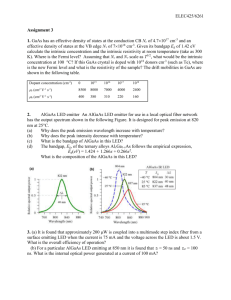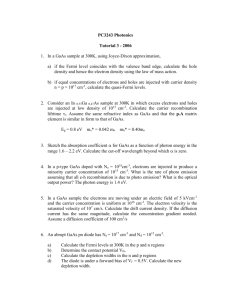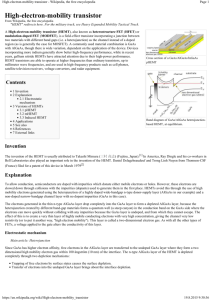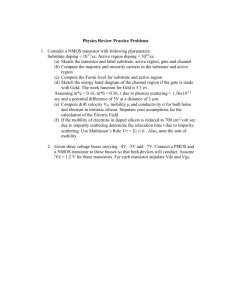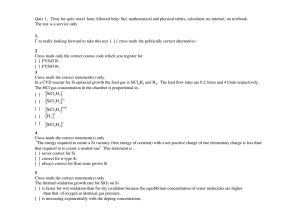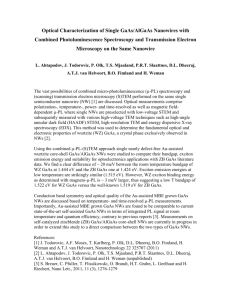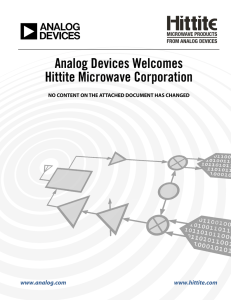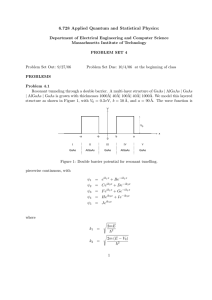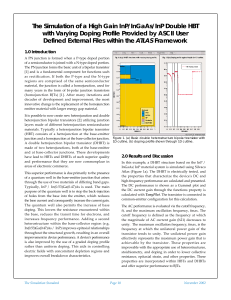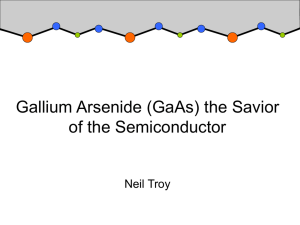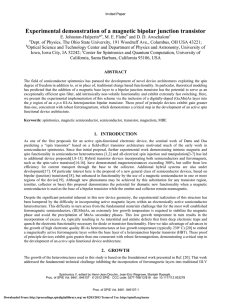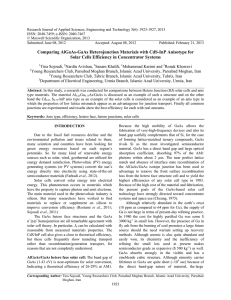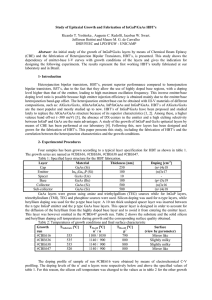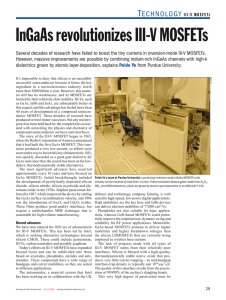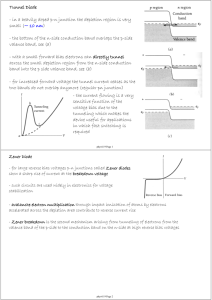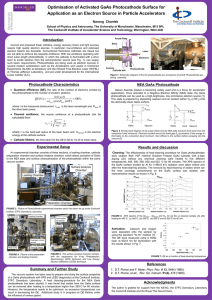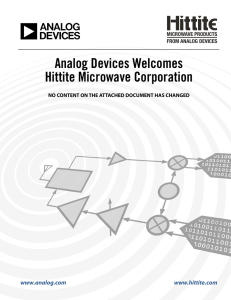Lecture 37
advertisement
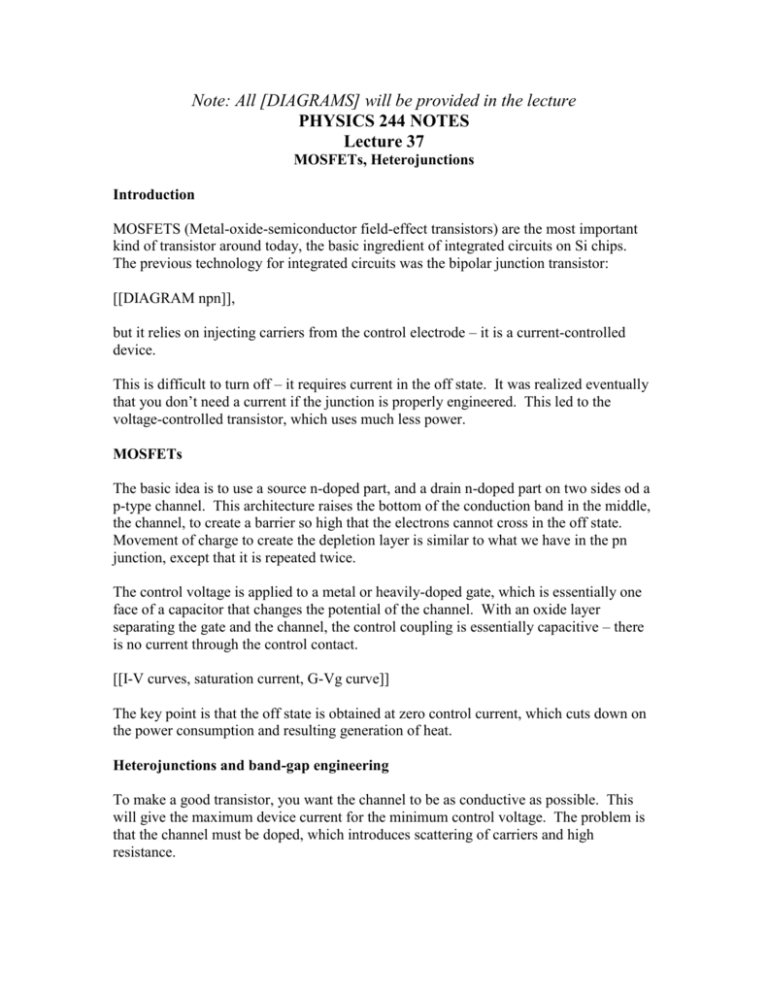
Note: All [DIAGRAMS] will be provided in the lecture PHYSICS 244 NOTES Lecture 37 MOSFETs, Heterojunctions Introduction MOSFETS (Metal-oxide-semiconductor field-effect transistors) are the most important kind of transistor around today, the basic ingredient of integrated circuits on Si chips. The previous technology for integrated circuits was the bipolar junction transistor: [[DIAGRAM npn]], but it relies on injecting carriers from the control electrode – it is a current-controlled device. This is difficult to turn off – it requires current in the off state. It was realized eventually that you don’t need a current if the junction is properly engineered. This led to the voltage-controlled transistor, which uses much less power. MOSFETs The basic idea is to use a source n-doped part, and a drain n-doped part on two sides od a p-type channel. This architecture raises the bottom of the conduction band in the middle, the channel, to create a barrier so high that the electrons cannot cross in the off state. Movement of charge to create the depletion layer is similar to what we have in the pn junction, except that it is repeated twice. The control voltage is applied to a metal or heavily-doped gate, which is essentially one face of a capacitor that changes the potential of the channel. With an oxide layer separating the gate and the channel, the control coupling is essentially capacitive – there is no current through the control contact. [[I-V curves, saturation current, G-Vg curve]] The key point is that the off state is obtained at zero control current, which cuts down on the power consumption and resulting generation of heat. Heterojunctions and band-gap engineering To make a good transistor, you want the channel to be as conductive as possible. This will give the maximum device current for the minimum control voltage. The problem is that the channel must be doped, which introduces scattering of carriers and high resistance. If we look at the channel a bit more carefully, we see that it is essentially a 2-d gas, with the motion in the third direction being always in the ground state of a triangular well potential. To get higher conductance, we may use the following trick, called modulation doping. Consider a sandwich of AlGaAs on two sides of a layer of GaAs. This is relatively easy to grow, because the two semiconductors have almost the same lattice constant. But AlGaAs has a bigger band gap 2.0 eV, as opposed to the 1.4 eV of GaAs. [[DIAGRAM]] Thus any electrons that are added to the system by doping will flow to the GaAs. We add the electrons by doping the outer layers with donors, but leaving the inner GaAs layer pristine. Then the electron flow is entirely in the GaAs, where there are no impurities, and therefore very little scattering. The mobility of the electrons can be increased by a couple of orders of magnitude, (depending on the temperature) in this way.

